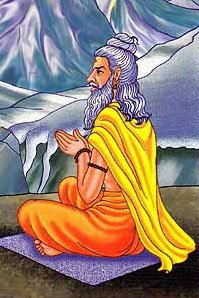Metrics: 1 definition
Introduction:
Metrics means something in Hinduism, Sanskrit. If you want to know the exact meaning, history, etymology or English translation of this term then check out the descriptions on this page. Add your comment or reference to a book if you want to contribute to this summary article.
In Hinduism
Purana and Itihasa (epic history)
Source: Shodhganga: Elements of Art and Architecture in the Trtiyakhanda of the VisnudharmottarapuranaMetrics refers to one of the topics dealt with in the Puranic literature: a category of ancient Sanskrit texts which gives a huge contribution in the development of Indian literature.—The Vishnudharmottara Purana contains different aspects of knowledge. Along with the narratives, this work bears immense information in various fields of study. [...] The third khanda contains 118 chapters which are dedicated to various contents such as Sanskrit and Prakrit Grammar, Lexicology, Metrics, Poetics, Dance, Drama, Music, Painting, Iconography, Architecture etc.

The Purana (पुराण, purāṇas) refers to Sanskrit literature preserving ancient India’s vast cultural history, including historical legends, religious ceremonies, various arts and sciences. The eighteen mahapuranas total over 400,000 shlokas (metrical couplets) and date to at least several centuries BCE.
See also (Relevant definitions)
Full-text (+422): Chandas, Vanibhushana, Bandhakaumudi, Mandavya, Saitava, Vrittamala, Pingala, Padyaracana, Prastarapattana, Vrittasara, Bhava, Chandasa, Brihadbhatta, Rangaratchandas, Kavyalakshmiprakasha, Prastaradyashtakarmavyakhya, Kavikrama, Rata, Mahakavi subandhu, Vaidikachandomanjari.
Relevant text
Search found 24 books and stories containing Metrics; (plurals include: Metricses). You can also click to the full overview containing English textual excerpts. Below are direct links for the most relevant articles:
Vasudevavijaya of Vasudeva (Study) (by Sajitha. A)
Vṛttaratnāvalī of Ilattūr Rāmasvāmiśāstri < [Chapter 1 - Śāstrakāvyas—A Brief Survey]
The Agni Purana (by N. Gangadharan)
Chapter 335 - The tabular representation (prastāra)
Chapter 219 - Sacred syllables for coronation (abhiṣeka-manta)
Cidgaganacandrika (study) (by S. Mahalakshmi)
Verse 3 [Purpose of the Work] < [Chapter 1 - First Vimarśa]
Philosophy of Charaka-samhita (by Asokan. G)
Indian sciences (the eighteen disciplines) < [Chapter 1 - Introduction]
Kavyamimamsa of Rajasekhara (Study) (by Debabrata Barai)
Part 3.5 - Classification of Sahṛdaya (critic or reader) < [Chapter 5 - Analyasis and Interpretations of the Kāvyamīmāṃsā]
Part 2 - Alaṃkāra theory and position of the Kāvyamīmāṃsā < [Chapter 4 - Position of the Kāvyamīmāṃsā in Sanskrit Poetics]
Part 1 - Rājaśekhara Contribution on Śāstriya Vimarṣa (poetical science) < [Chapter 3 - Contribution of Rājaśekhara to Sanskrit Poetics]
A History of Indian Philosophy Volume 1 (by Surendranath Dasgupta)
Part 3 - The Canonical and other Literature of the Jains < [Chapter VI - The Jaina Philosophy]
Related products
